P.PSH.0773 - LAMBPRO Resource Flock
The LAMBPRO Maternal Resource Flock is one of the first maternal resource flocks specialising in self-replacing maternal genetics.
| Project start date: | 06 April 2016 |
| Project end date: | 30 June 2020 |
| Publication date: | 29 October 2025 |
| Project status: | Completed |
| Livestock species: | Sheep |
| Relevant regions: | National |
|
Download Report
|
|
Summary
The LAMBPRO Resource Flock project is split into two areas: maternal and terminal. The LAMBPRO Maternal Resource Flock is one of the first maternal resource flocks specialising in self-replacing maternal genetics. In 2015, a reference flock of 543 ewe lambs by 17 sires was established. A further 157 ewe lambs resulted from the 2016 lambing, representing approximately 700 potential ewe lambs in the project. The performance of these daughters from 23 sires, was tracked using DNA parentage, for two seasons, to gain further understanding of what drives profitability in varying climatic regions of Australia.
Over the last three years, the LAMBPRO Terminal Resource Flock has enabled LAMBPRO to test and identify sire lines which have the capacity to produce highly marbled lamb. It has highlighted the variance in meat quality not only amongst terminal breeds, but also within terminal breeds. Using the data collected throughout this project, LAMBPRO has been able to establish an eating quality index, which places a great amount of selection pressure on consumer satisfaction, whilst incorporating yield.
Objectives
Terminal sire project:
1) Produce two cohorts of slaughter lambs (100–150 head) from Poll Dorset, South Down-Poll Dorset and South Down sires.
2) Collect sire and slaughter progeny DNA for testing.
3) Collect loin samples for intra-muscular fat (IMF) and SF5 testing.
4) Collect loin samples for sensory testing.
5) Provide all data for inclusion in the Resource Flock database for further R&D and, as appropriate, inclusion in routine LAMBPLAN analyses.
Maternal sire project:
1) Mate c. 1,750 maternal composite ewes p.a. across four sites to c.35 composite maternal sires to produce 600–700 daughters.
2) Mate the daughters twice to composite maternal sires and recorded production traits (scanned conception rate, NLW, WWt, PWt, WEC, slaughter weight, carcase weight).
3) Complete economic modelling to improve estimation of economic parameters that underpin selection indexes. This will include investigation of the potential need to vary index weightings to achieve the best outcome under different production environments.
4) Utilise slaughter progeny for further research and development (R&D) as opportunities arise, for example, carcase yield data should DEXA estimation be available, either commercially or in future R&D.
All appropriate data generated will be included in the RF/Sheep Genetics databases, as appropriate, to support current R&D.
Key findings
Looking at the data for the maternal flock, the highest ram for NLW produced the most lambs 154%, and the lowest NLW ram produced the least lamb 78%. However, an important difference to note, was there was a 70% difference in weaning percent: highlighting the impact of using known genetics. The other major impact was the relationship between turn-off weight and number of lambs weaned. The highest ranked ram 070807, had one of the lowest two-year-old weaning weight per ewe joined. The key message here is fertility is extremely important in self-replacing maternal models, but milk and early growth is just as vitally important to ensure lamb survival and optimal weaning weights.
For the terminal flock, the project began looking at Poll Dorset, and Southdown sheep, and over time included Hampshire Down sheep. This inclusion saw the discovery of the leading marbling genetics in Australia, from a breed that had little to no performance data or had little inclusion in previous information nucleus projects with the She
Benefits to industry
This project focuses on terminal sire eating quality and composite maternal prime lamb production systems which will complement the Resource Flock and the current weight of R&D on traditional terminal, Merino and first-cross prime lamb production systems.
MLA action
This report has been published to showcase the findings from the LAMBPRO Resource Flock project.
Future research
This finding has been the catalyst for the commencement of a lamb brand based on the Hampshire Down genetics. Lamb has been trialled by leading Middle East, Chinese, and domestic markets with significant interest. In 2021 the first commercial shipments of lamb will commence to these markets. The future for a premium high IMF (>7%) is real, and all on the back of progeny testing as part of this project.
More information
| Project manager: | Peta Bradley |
| Contact email: | reports@mla.com.au |
| Primary researcher: | Lambpro Partnership |


